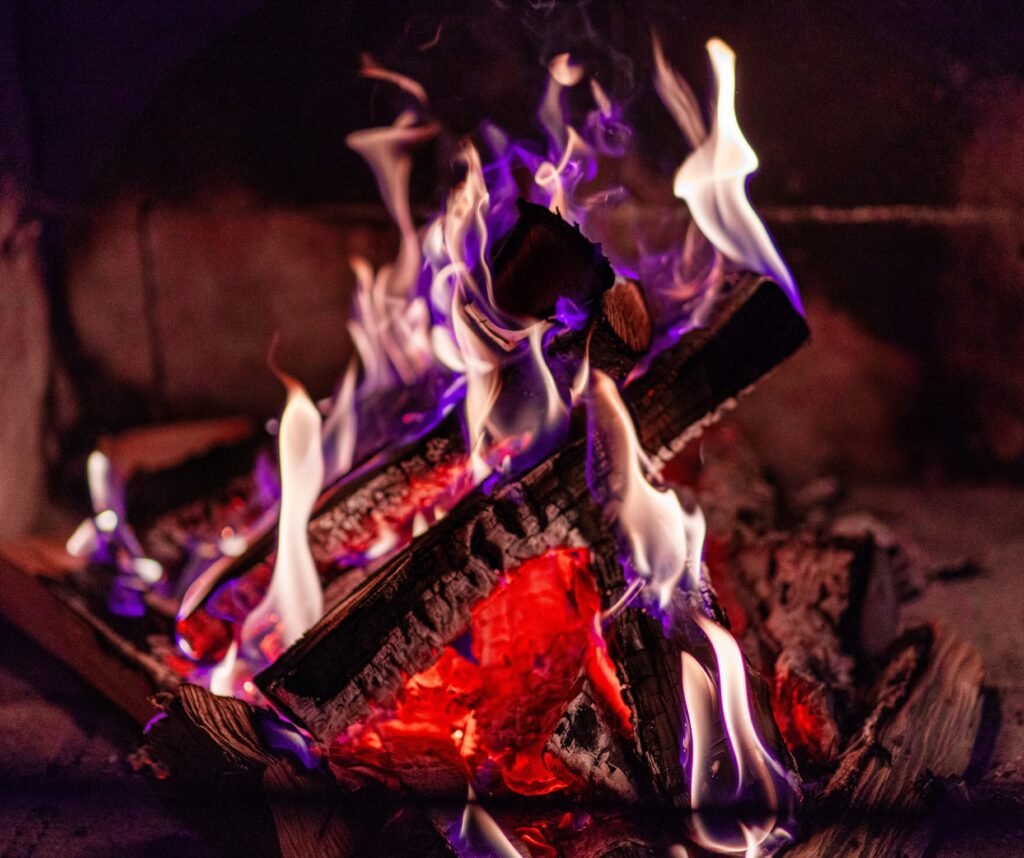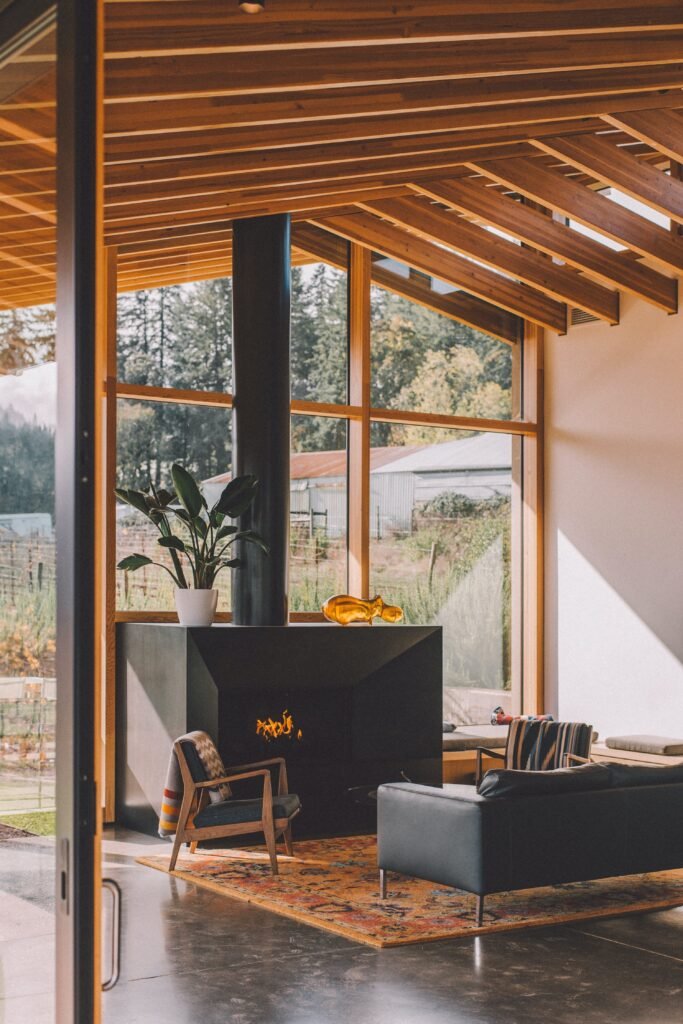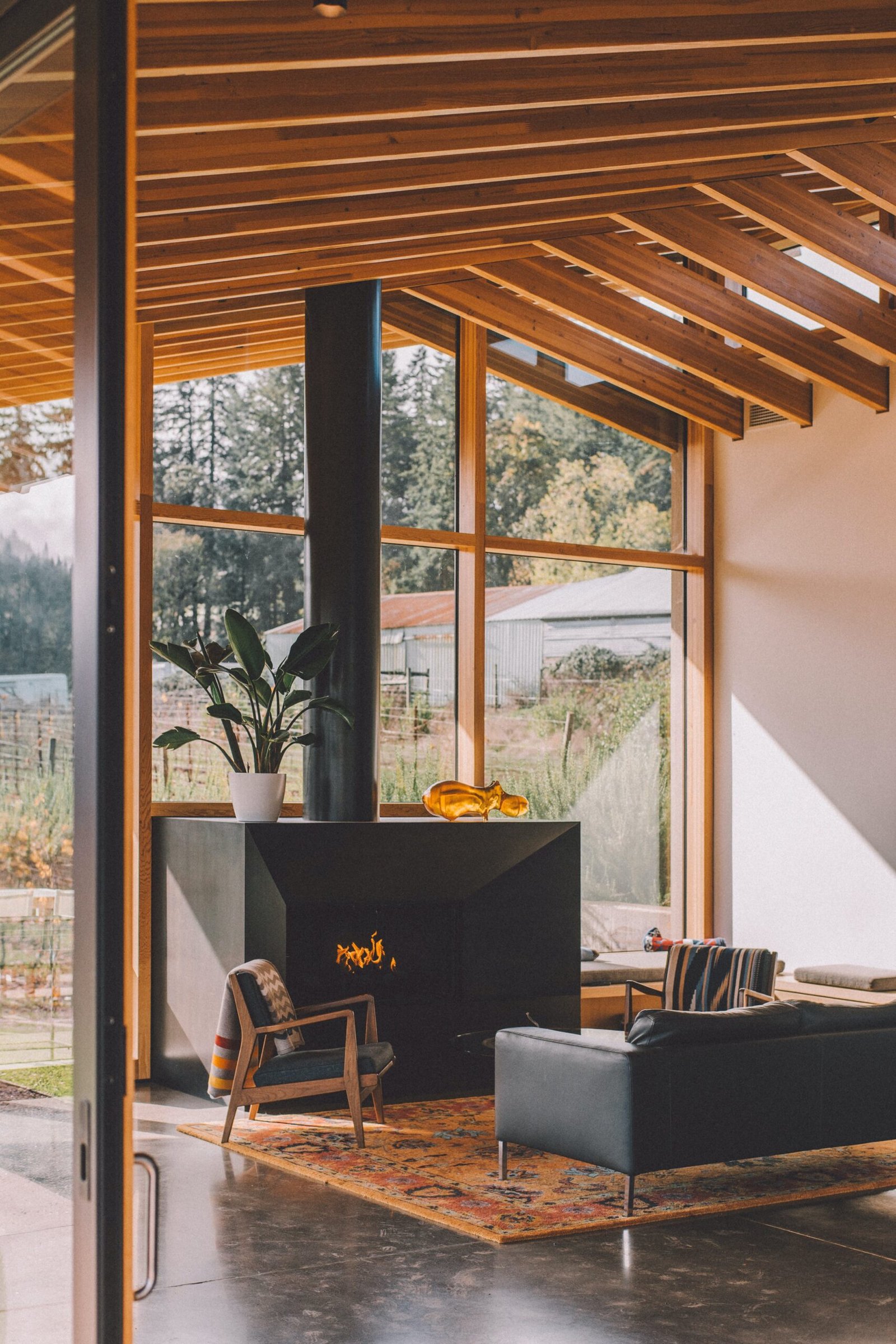Get ready to cozy up in front of a roaring fire all winter long with the help of our comprehensive guide to fireplace maintenance. From keeping your hearth clean and safe to ensuring optimal performance, we’ve got you covered. Whether you’re a seasoned fireplace owner or a first-time enthusiast, our easy-to-follow tips and tricks will help you maintain your fireplace in top-notch condition. Say goodbye to cold nights and hello to a warm and inviting home with our ultimate fireplace maintenance guide.

This image is property of images.pexels.com.
The Ultimate Fireplace Maintenance Guide: Everything You Need to Know
Having a fireplace in your home can bring warmth, comfort, and a cozy ambiance to any space. Whether you have a wood-burning, gas, or electric fireplace, regular maintenance is essential to ensure its safety, efficiency, and longevity. In this comprehensive guide, we will take you through the different types of fireplaces, the importance of maintenance, the tools and equipment you’ll need, and step-by-step instructions for cleaning and inspection. We will also address common fireplace issues and provide tips for maintaining the surrounding area. So grab a cup of hot cocoa, sit back, and let’s dive into the world of fireplace care and maintenance!
A. Types of Fireplaces
1. Wood-Burning Fireplaces
Wood-burning fireplaces have been a traditional and popular choice for homeowners for centuries. The crackling sound of burning wood and the rustic scent it emits add to the charm of these fireplaces. However, they require regular upkeep to ensure safe and efficient operation. Regular chimney cleaning is crucial to remove creosote buildup, which can lead to chimney fires. It is also essential to keep the hearth clear of debris and ensure proper airflow for optimal combustion.
2. Gas Fireplaces
Gas fireplaces offer the convenience of instant heat and easy operation with the flick of a switch. They are a popular choice for homeowners who want the warmth and ambiance of a fireplace without the hassle of wood-burning maintenance. Gas fireplaces, however, still require some maintenance to ensure safe operation. Regular inspections of the gas lines, igniter, and pilot light are necessary to detect any leaks or malfunctions.
3. Electric Fireplaces
Electric fireplaces are becoming increasingly popular due to their convenience and ease of use. These fireplaces do not require any venting or fuel, making them a great option for apartments or homes without chimneys. To maintain an electric fireplace, regular cleaning of the glass panel and inspecting the heating element is essential. It is also important to check the electrical connections periodically to ensure safe operation.
B. Importance of Fireplace Maintenance
Regular maintenance of your fireplace is not just a matter of aesthetics; it is crucial for the safety, efficiency, and lifespan of your fireplace. Let’s take a closer look at why maintaining your fireplace is of utmost importance.
1. Ensures Safety
One of the most critical reasons for fireplace maintenance is ensuring the safety of you and your family. Fireplaces produce heat, and if not properly maintained, can pose a fire hazard. Creosote buildup, blocked chimneys, or malfunctioning gas lines can increase the risk of chimney fires and carbon monoxide leaks. By regularly cleaning and inspecting your fireplace, you can identify and address any potential safety issues before they escalate.
2. Increases Efficiency
A well-maintained fireplace operates more efficiently, which translates to better heat production and lower energy costs. Wood-burning fireplaces that are cleaned regularly burn fuel more efficiently, resulting in increased heat output and reduced smoke emissions. Gas fireplaces with clean burners and properly functioning pilot lights can provide consistent heat without wasting gas. Electric fireplaces with clean heating elements can efficiently convert electricity into heat, providing maximum warmth for your space.
3. Extends Lifespan
Proper maintenance can significantly extend the lifespan of your fireplace, saving you money in the long run. Regular cleaning ensures that your fireplace components, such as fireboxes, chimneys, and gas lines, are free from debris and potential blockages that can cause premature wear and tear. By addressing issues promptly and conducting routine inspections, you can catch and correct problems early on, preventing further damage and costly repairs or replacements.
C. Tools and Equipment
To effectively maintain your fireplace, you’ll need a few essential tools and equipment. Let’s go over the items you should have in your fireplace maintenance toolkit.
1. Fireplace Brush
A fireplace brush, also known as a hearth brush, is a must-have tool for cleaning the firebox and removing ash and soot buildup. It usually has sturdy bristles and a long handle, allowing you to reach deep into the fireplace.
2. Ash Shovel
An ash shovel is used to scoop and remove ashes from the firebox. It is essential for maintaining a clean and debris-free hearth.
3. Fireplace Gloves
When cleaning or handling the fireplace, it is crucial to protect your hands with fireplace gloves. These gloves are specially designed to withstand high temperatures and protect your skin from burns.
4. Chimney Brush
For wood-burning fireplaces, a chimney brush is necessary to remove creosote buildup from the chimney walls. The brush should be the appropriate size and shape for your chimney to ensure effective cleaning.
5. Vacuum Cleaner
A good quality vacuum cleaner with a HEPA filter is essential for removing fine particles, such as ash and soot, from the fireplace and surrounding areas. Make sure the vacuum is suitable for use with fireplaces and can handle the heat and debris without causing damage.

This image is property of images.pexels.com.
D. Regular Cleaning and Inspection
Regular cleaning and inspection are vital to maintaining a safe and efficient fireplace. Let’s break down the steps involved in cleaning and inspecting different types of fireplaces.
1. Cleaning the Hearth and Firebox
Start by clearing the hearth and firebox of any debris or ashes using a fireplace brush and ash shovel. Dispose of the ashes in a metal container with a tight-fitting lid and store in a non-combustible area until completely cooled. Once the hearth is clear, use the fireplace brush to sweep away any loose dirt or soot.
2. Removing Ashes and Soot
In wood-burning fireplaces, it is important to remove ashes and soot regularly to prevent the buildup of creosote. Use an ash shovel to scoop out the ashes, taking care to avoid stirring up dust. Dispose of the ashes as mentioned earlier. For gas and electric fireplaces, a thorough cleaning of the firebox is not necessary, as there are no combustion by-products.
3. Cleaning the Chimney
For wood-burning fireplaces, chimney cleaning is a crucial step to prevent the risk of chimney fires. Use a chimney brush and extension rods to scrub the chimney walls and remove any creosote buildup. It is recommended to hire a professional chimney sweep for this task, as they have the expertise and equipment to ensure a thorough cleaning.
4. Checking for Cracks and Leaks
Inspect the firebox, chimney, and gas lines for any cracks, leaks, or damage. Cracks can weaken the integrity of the fireplace, while gas leaks can be dangerous. If you notice any issues, it is best to contact a professional for repairs.
5. Inspecting the Flue
Check the flue, also known as the damper, to ensure it opens and closes smoothly. It should create a tight seal when closed to prevent drafts when the fireplace is not in use.
E. Chimney Cleaning and Maintenance
Chimney cleaning is a crucial aspect of fireplace maintenance, particularly for wood-burning fireplaces. While it is possible to perform chimney cleaning yourself, it is highly recommended to hire a professional chimney sweep for a thorough and safe cleaning. Here are the steps involved in chimney cleaning and maintenance.
1. Hiring a Professional Chimney Sweep
Hiring a professional chimney sweep ensures a thorough cleaning and inspection of your chimney. They have specialized equipment, such as chimney brushes and high-powered vacuums, to remove creosote, soot, and debris. Professional chimney sweeps can also identify potential issues and provide recommendations for repairs or improvements.
2. DIY Chimney Cleaning
If you choose to clean the chimney yourself, you will need a chimney brush, extension rods, and a vacuum cleaner with a HEPA filter. Start by covering the fireplace opening with plastic or a tarp to prevent debris from entering your home. Attach the chimney brush to the extension rods and insert the brush into the chimney from the bottom. Use an up-and-down motion to scrub the chimney walls, gradually extending the rods as you go. Once you have completed the cleaning, use the vacuum cleaner to remove the dislodged debris from the firebox.
3. Removing Creosote
Creosote is a highly flammable substance that forms as a by-product of burning wood. The accumulation of creosote in the chimney can lead to chimney fires. To remove creosote buildup, regular chimney cleaning is necessary. In addition to using a chimney brush, you can also use creosote removers or treatments specifically designed to break down and remove creosote from the walls of the chimney.

This image is property of images.pexels.com.
F. Safety Measures to Follow
Fireplaces can be a source of warmth and comfort, but it’s essential to follow certain safety measures to ensure the well-being of you and your home. Let’s explore some safety tips to keep in mind when operating and maintaining a fireplace.
1. Installing Carbon Monoxide Detectors
Carbon monoxide is a silent and deadly gas that can be emitted by fireplaces. Install carbon monoxide detectors near your fireplace and throughout your home to detect any dangerous levels of this gas. Regularly check the batteries and ensure they are in working order.
2. Using Fire Screens or Doors
Fire screens or doors act as a barrier between the open fireplace and the room, protecting against sparks or embers that could ignite flammable materials. Keep the fire screen or doors closed when the fireplace is in use and ensure they are sturdy and in good condition.
3. Keeping Flammable Objects Away
Keep flammable objects, such as curtains, furniture, and decorations, at a safe distance from the fireplace. Sparks and heat can easily ignite these materials, posing a fire risk. Establish a clear zone around the fireplace, free from any potential fire hazards.
4. Extinguishing the Fire Properly
When you are done using the fireplace, make sure to extinguish the fire completely. Use a metal fire poker or fireplace shovel to separate and spread out the remaining embers. Wait until the ash has cooled completely before disposing of it in a metal container with a tight-fitting lid.
5. Storing Firewood Safely
If you have a wood-burning fireplace, it is important to store firewood properly. Keep firewood at least 30 feet away from your home to prevent pests and minimize the risk of fire spreading. Stack the firewood in a neat and stable manner, ensuring proper ventilation to prevent rot or mold.
G. Gas Fireplace Maintenance
Gas fireplaces require maintenance to ensure their safe and efficient operation. Let’s take a look at some essential steps for gas fireplace maintenance.
1. Cleaning the Gas Logs
Gas logs can accumulate dust and debris over time, affecting the appearance and performance of your gas fireplace. Follow the manufacturer’s instructions to remove the gas logs and clean them using a soft brush or cloth. Avoid using abrasive cleaners or water, as it can damage the logs.
2. Inspecting the Gas Lines
Regularly inspect the gas lines for leaks or damage. If you notice a gas odor or suspect a leak, turn off the gas supply immediately and contact a professional for repairs. Gas line inspections should be performed by a qualified technician trained in gas fireplace maintenance.
3. Checking the Igniter and Pilot Light
The igniter and pilot light are essential components of a gas fireplace. Check the igniter for any signs of wear or damage and replace it if necessary. Ensure that the pilot light is consistently lit and producing a strong flame. If the flame is weak or inconsistent, contact a professional for assistance.
4. Monitoring Carbon Monoxide Levels
Gas fireplaces can emit carbon monoxide, a potentially deadly gas. Install carbon monoxide detectors near your gas fireplace and regularly check their batteries to ensure they are working properly. If the detectors alarm or you experience symptoms of carbon monoxide poisoning, such as dizziness or nausea, evacuate the area and seek immediate medical attention.
H. Electric Fireplace Maintenance
Electric fireplaces are relatively low-maintenance compared to wood-burning or gas fireplaces. Nevertheless, it is important to perform regular maintenance to ensure their optimal performance and safety. Here are some essential steps for electric fireplace maintenance.
1. Cleaning the Glass Panel
The glass panel of an electric fireplace can accumulate dust and smudges over time. Use a non-abrasive glass cleaner and a soft cloth to clean the panel. Avoid using harsh chemicals or abrasive materials that could damage the glass.
2. Inspecting the Heating Element
Check the heating element of your electric fireplace for any signs of wear or damage. A damaged heating element may result in inefficient heating or potential malfunctions. If you notice any issues, contact the manufacturer or a qualified technician for repairs.
3. Checking the Electrical Connections
Inspect the electrical connections of your electric fireplace to ensure they are secure and in good condition. Loose or damaged electrical connections can lead to electrical hazards or malfunctions. If you are unsure about the integrity of the electrical connections, contact a professional electrician for assistance.
4. Replacing the Bulbs
Electric fireplaces often use bulbs to simulate the appearance of flames. Check the bulbs regularly and replace any that are burned out or flickering. Follow the manufacturer’s instructions for proper bulb replacement and ensure you use bulbs of the correct type and wattage.
I. Addressing Common Fireplace Issues
Even with regular maintenance, fireplaces can encounter common issues that require attention. Let’s explore some common fireplace problems and how to address them.
1. Damp Fireplace
A damp fireplace can be caused by various factors, such as a leaky chimney, condensation, or moisture infiltration. Addressing the root cause of the dampness is essential to prevent further damage. It is best to consult a professional chimney inspector or waterproofing specialist to identify and resolve the issue.
2. Smoking Fireplace
A smoking fireplace can occur when the chimney fails to draw the smoke upward, causing it to flow back into the room. Several factors can contribute to a smoking fireplace, including a blockage in the chimney, an inadequate flue size, or poor airflow. It is recommended to contact a professional chimney sweep to inspect the chimney and determine the cause of the smoking.
3. Pilot Light Won’t Stay Lit
If the pilot light in a gas fireplace won’t stay lit, it could be due to a faulty thermocouple or a problem with the gas supply. Check the position and condition of the thermocouple and ensure it is properly heated by the pilot flame. If the issue persists, contact a professional for further diagnosis and repair.
4. Gas Odor
A gas odor coming from a gas fireplace could indicate a gas leak, which poses a serious safety risk. If you smell gas, immediately turn off the gas supply, open windows for ventilation, and leave the area. Contact your gas provider or a professional technician to locate and repair the gas leak.
5. Uneven Heating
Uneven heating in a fireplace can be caused by various factors, such as a blocked vent, faulty blower, or improper placement of logs or electric heaters. Check the vent for obstructions and ensure it is fully open. Clean or replace the blower if necessary. For electric fireplaces, adjust the placement of the logs or heaters to distribute the heat evenly.
J. Maintaining the Surrounding Area
In addition to maintaining the fireplace itself, it is important to keep the surrounding area clean and well-maintained. Here are some tips for maintaining the area around your fireplace.
1. Cleaning the Mantelpiece
Regularly dust and clean the mantelpiece to remove any dirt or debris. Use a soft cloth or a duster to gently wipe the surface. Avoid using harsh chemicals or abrasive cleaners that could damage the finish.
2. Removing Dust and Debris
Vacuum or sweep the area around the fireplace to remove any dust or debris that may have accumulated. Pay attention to hard-to-reach areas and corners where dirt may collect.
3. Arranging Decorative Elements
Enhance the visual appeal of your fireplace by arranging decorative elements, such as artwork, candles, or plants, on the mantelpiece or adjacent shelves. Ensure that these items are kept a safe distance from the fireplace to prevent any fire hazards.
By following these comprehensive fireplace maintenance guidelines, you can enjoy the warmth and ambiance of your fireplace while ensuring its safety, efficiency, and longevity. Remember to consult your specific fireplace manufacturer’s instructions for any maintenance or cleaning procedures. With proper care, your fireplace will continue to be a cherished centerpiece in your home for years to come!




